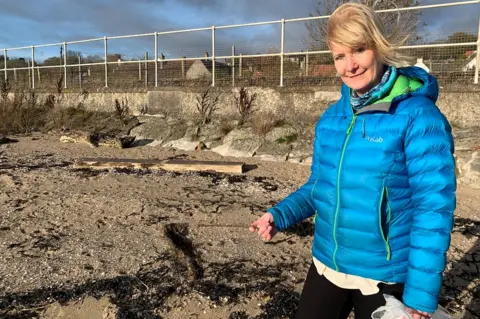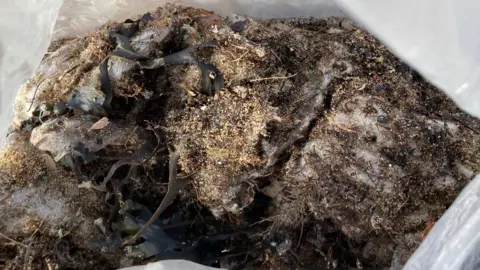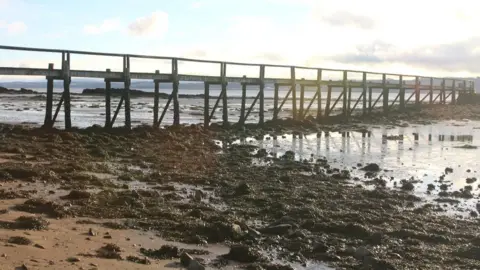Wet wipe sewage washing up on Forth shoreline
 BBC
BBCWet wipes and sanitary towels are continually being washed up on the shores of the Firth of Forth, Scottish Water has admitted.
The utility firm said the sewage debris sits in the main body of the estuary and is brought to the shoreline during certain wind and tidal patterns.
Most of this waste is then taken back out into the Forth by the tide and stays suspended in the water.
A total of £25m of improvement works are needed to help address the problem.
But Scottish Water has still to unveil a timetable for when these changes, first recommended in 2018, will be made.
The publicly-owned quango said it was committed to "deliver the right solutions in the most sustainable way" for the Firth of Forth.
The affected areas stretch from Falkirk to Edinburgh on the south coast of the estuary, and from Culross to Aberdour on the north side in Fife.
Diane MacKenzie, who has lived in the West Fife village of Culross for more than 30 years, told BBC Scotland that sewage debris is washed up on its shoreline on a regular basis but can be hard to spot.
She explained: "At first when we'd go and do our beach clean-ups we thought where is all this stuffing coming from because it looked exactly like you'd find inside a sofa.
"It took us a long time to realise what it was, it's so engrained and shredded that it doesn't look like wet wipes when you first look at it.
"It's disappointing to discover that what you think is a clean beach isn't clean at all and has all these sanitary products entangled in the sand and the seaweed. It's a shame the beach can't be safely enjoyed."

An internal Scottish Water report, released under freedom of information laws, suggests there is "a body of sewage related debris held in suspension within the Firth of Forth that is being washed up along the beaches and is being topped up new sewer discharges".
It is thought most of the waste is discarded wet wipes - the biggest contributors to blockages in Scotland's sewer network.
The 2018 report makes a total of 27 recommendations including improving screening of sewage debris and building better waste overflow facilities.
But detailed development and appraisal process for these projects will not be completed until 2023.
Mrs MacKenzie said it was "frustrating" there was no timetable for the Scottish Water improvements starting but added people in Culross would be willing to help with more beach clear-ups in the meantime if given the resources by Scottish Water.

Earlier this year BBC Scotland revealed the number of recorded sewage spills in the country's rivers and seas has increased by 40% over the last five years.
However, Scottish Water is only required to monitor a fraction of its overflow pipes, so the true scale of how much waste is being discharged is unknown.
'Right solutions'
A Scottish Water spokesman said it takes its environmental responsibilities "very seriously" and said its teams cleaned the beach at Culross in the summer after concerns about sewage related debris were raised.
He added: "The study set out to understand the potential sources of sewer related debris in the Forth and was commissioned partly in response to local concerns.
"We understand that the time it takes to plan, prioritise and fund solutions can be frustrating, but it is important that we deliver the right solutions in the most sustainable way.
"We are committed to reducing the amount of sewage-related debris in water bodies in and around Scotland through more monitoring, targeted investment and campaigns around unflushable items."